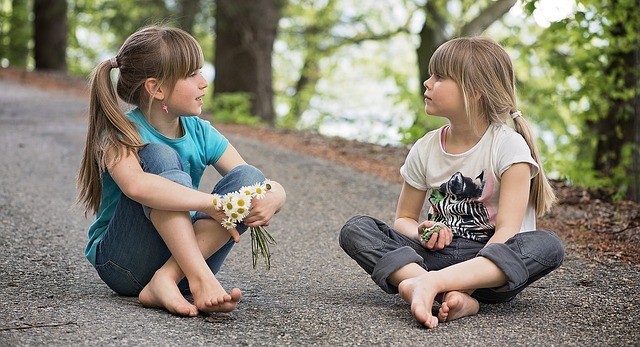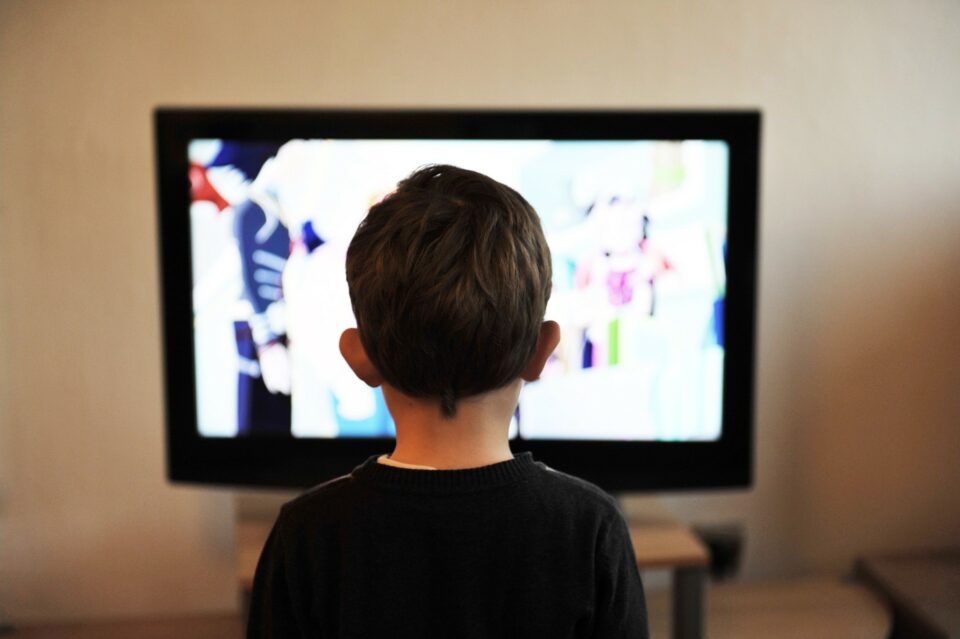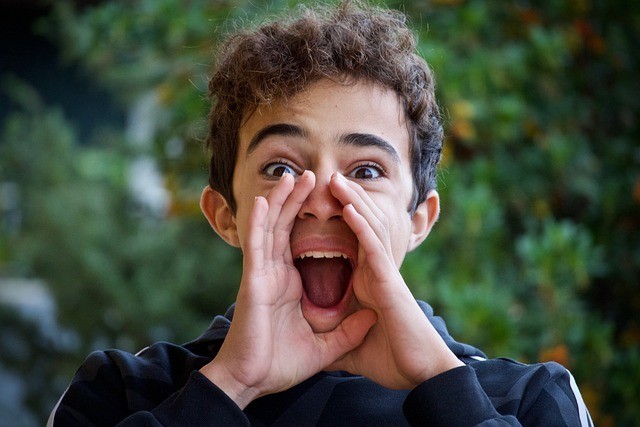In today’s fast-paced world, the ability to communicate effectively is more important than ever. Whether it’s expressing their thoughts and feelings, building strong relationships, or succeeding in school and beyond, children who possess good communication skills have a distinct advantage.
In this article, we will explore various strategies and techniques that can help children develop these essential skills. From active listening to clear articulation, from non-verbal cues to empathy and understanding, we will cover a wide range of topics that are crucial for effective communication.
So, let’s dive in together as we embark on this exciting journey of empowering our kids with the tools they need for successful communication!
The Importance of Effective Communication Skills For Children
Effective communication skills are crucial for children as they play a significant role in their overall development and success. Here are some reasons why effective communication skills are important for children:
- Building relationships: Good communication skills help children build positive relationships with their peers, teachers, and family members. It enables them to express themselves clearly, listen actively, and understand others’ perspectives.
- Academic success: Effective communication is essential for academic success as it helps children articulate their thoughts, ask questions, and participate actively in classroom discussions. It also enhances their ability to comprehend information and express ideas effectively through writing.
- Emotional intelligence: Communication skills contribute to the development of emotional intelligence in children. By expressing their feelings and needs appropriately, they can develop empathy towards others and manage conflicts more effectively.
- Problem-solving abilities: Effective communicators have better problem-solving abilities as they can clearly convey their thoughts, seek help when needed and collaborate with others to find solutions.
- Self-confidence: When children can communicate confidently with others, it boosts their self-esteem and self-confidence levels. They feel more comfortable expressing themselves in various social situations.
- Leadership skills: Strong communication skills lay the foundation for leadership qualities in children by enabling them to inspire others through effective verbal expression or persuasive writing.
- Future career prospects: In today’s competitive world, employers value individuals who possess excellent communication skills. Children who develop these skills early on will have an advantage when entering the workforce later on.
Remember that every child develops at their own pace, so be patient and provide support as they learn and grow their communication skills.
Active Listening Skills
Listening attentively is important for children for several reasons:
- Learning: When children listen attentively, they are able to absorb information more effectively. They can understand instructions, follow directions, and grasp new concepts more easily.
- Empathy: Attentive listening allows children to understand and empathize with others’ perspectives and feelings. It promotes compassion, kindness, and the ability to build strong relationships with their peers.
- Problem-solving: Active listening enables children to gather all the necessary information before attempting to solve a problem or make a decision. It helps them analyse situations better and come up with creative solutions.
- Respectful behavior: Teaching children how to listen attentively instils respect for others’ opinions and ideas. It encourages them to value different viewpoints while fostering an inclusive environment where everyone feels heard.
Here are some tips to encourage active listening in children:
- Maintain eye contact: Teach children to look at the person speaking, making eye contact shows that they are paying attention.
- Use body language: Encourage children to face the speaker, sit up straight, and nod their head occasionally to show that they are engaged in the conversation.
- Avoid interrupting: Teach children not to interrupt when someone is speaking. Instead, they can raise their hand or wait for a pause before contributing.
- Ask questions: Encourage children to ask questions about what is being said. This shows that they are actively thinking about the topic and seeking clarification if needed.
- Paraphrase or summarize: Teach children how to paraphrase or summarize what has been said as a way of demonstrating understanding and active listening.
- Practice turn-taking: Encourage taking turns during conversations by teaching them how to listen patiently until it’s their turn to speak.
Expressing Thoughts and Feelings
Teaching children to express their thoughts and feelings is an important aspect of their emotional development. Here are some helpful tips to guide you in this process:
- Create a safe and supportive environment: Ensure that children feel comfortable expressing themselves without fear of judgment or criticism. Encourage open communication and let them know that their thoughts and feelings are valid.
- Be a good listener: Give your full attention when children want to share something with you. Maintain eye contact, nod, and show genuine interest in what they have to say. This will make them feel heard and valued.
- Use age-appropriate language: Tailor your communication style to the child’s age level, using words they can understand easily. Avoid using complex terms or concepts that might confuse them.
- Encourage self-expression through play: Younger children often find it easier to express themselves through play rather than direct conversation. Provide them with toys, art supplies, or other creative outlets where they can freely express their thoughts and emotions.
- Teach emotional vocabulary: Help children identify different emotions by giving names to what they are feeling (e.g., happy, sad, angry). This will enable them to better articulate their emotions as they grow older.
- Model healthy expression of emotions: Children learn by observing others’ behavior, so be mindful of how you express your own thoughts and feelings in front of them. Show them healthy ways of managing difficult emotions like stress or frustration.
- Validate their feelings: Let children know that it’s okay for them to experience a wide range of emotions – both positive and negative – without judgment or dismissal. Validate their feelings by saying things like “I understand why you feel that way” or “It’s normal to feel upset about this.”
- Teach problem-solving skills: Help children find constructive ways to express their thoughts and feelings when faced with challenges or conflicts. Encourage them to think of possible solutions and guide them through the process of effective communication.
- Celebrate their efforts: Praise children for expressing themselves, even if it’s not always perfect or exactly what you expected. Positive reinforcement will motivate them to continue sharing their thoughts and feelings openly.
Nonverbal Communication
Nonverbal communication is just as important as verbal; it allows us to interpret what isn’t being said. However, it’s just as important to make sure you’re interpreting it correctly!
Teaching children about nonverbal communication can be a fun and interactive experience. Here are some creative and friendly ways to help children understand the importance of nonverbal cues:
- Charades: Play a game of charades where children have to act out different emotions or actions without using any words. This will help them understand how body language, facial expressions, and gestures can convey messages.
- Emotion cards: Create a set of emotion cards with pictures depicting various feelings such as happiness, sadness, anger, surprise, etc. Ask the children to match each card with the corresponding facial expression or body language.
- Storytelling through gestures: Encourage the children to tell a story using only gestures and facial expressions. They can take turns being both the storyteller and the audience, guessing what is happening in each other’s stories based on nonverbal cues.
- Role-playing scenarios: Create different scenarios where nonverbal communication plays a crucial role (e.g., meeting someone new, apologizing). Have the children act out these situations using appropriate body language and facial expressions.
- Nonverbal detective game: Show pictures or videos of people displaying various emotions or actions without sound (e.g., someone looking surprised or someone waving goodbye). The children then become “nonverbal detectives” trying to guess what message is being conveyed solely through visual cues.
Conflict Resolution Skills
Teaching children about conflict resolution is a valuable life skill that can help them navigate relationships and solve problems in a peaceful and productive manner.
Here are some creative and friendly ways to teach children about conflict resolution:
- Storytelling: Use age-appropriate stories or fables that highlight conflicts and their resolutions. After reading the story, discuss with the children how the characters resolved their issues peacefully.
- Role-playing: Encourage children to act out different scenarios where conflicts arise, such as sharing toys or disagreements with friends. Guide them through finding solutions together, emphasizing active listening, compromise, and empathy.
- Peaceful communication exercises: Teach children effective communication skills by engaging in activities like “talking stick,” where they take turns speaking while holding an object like a stick or toy to ensure everyone has a chance to be heard.
- Emotion recognition activities: Help children identify their emotions by using emotion cards or drawings of facial expressions. Discuss how different emotions can lead to conflicts and brainstorm healthy ways of expressing those feelings without hurting others.
- Mindfulness exercises: Teach mindfulness techniques like deep breathing or guided meditation to help children calm down when they feel upset during conflicts. Encourage them to use these techniques before responding impulsively.
- Friendship circles: Create safe spaces for open discussions about conflicts within friendship circles or classroom settings regularly. Encourage active listening, respect for differing opinions, and guide them towards finding mutually beneficial solutions.
- Positive reinforcement: Praise and reward positive conflict resolution behaviours such as compromising, apologising sincerely when wronged, actively listening without interrupting others’ thoughts during disagreements.
Assertiveness and Advocacy
Teaching children about assertiveness and advocacy is a wonderful way to empower them and help them develop important life skills.
- Start with the basics: Begin by explaining what assertiveness means – standing up for oneself in a respectful manner, expressing thoughts, feelings, and needs clearly and confidently.
- Role-playing: Engage children in role-playing scenarios where they can practice being assertive. Create situations where they have to express their opinions or ask for something they need.
- Active listening: Teach children the importance of active listening when advocating for themselves or others. Encourage them to pay attention to others’ perspectives and respond thoughtfully.
- Encourage self-expression: Provide opportunities for children to express themselves creatively through art, writing, or public speaking activities. This helps build confidence in sharing their thoughts and ideas.
- Discuss empathy and understanding: Explain the importance of considering other people’s feelings while still standing up for oneself or advocating for a cause.
- Explore real-life examples: Share stories of individuals who have made positive changes through advocacy efforts, such as activists who fought for equal rights or environmental conservationists who worked towards protecting nature.
- Foster teamwork: Encourage collaborative projects where children work together towards a common goal, promoting cooperation while still asserting their individual ideas within the group dynamic.
By empowering children to be assertive and advocate for themselves and others, you are helping them become confident individuals who can make a positive impact on the world around them.
Respectful Communication
Respectful communication is a must in all settings and it’s something that can be taught to children by example. Make sure that you role model respectful behaviour both when you think your child is and isn’t listening! That way, they will see you acting in a respectful manner and want to do the same.
Of course, you should also teach your children manners and polite language and praise them when they say their “please” and “thank you.” Positive reinforcement goes a long way here.
When children show communication that isn’t as respectful as it should be, sit down and talk to them about the episode and help them to see where they went wrong and where they could improve.
Technology and Communication
We communicate more and more in the digital world, and it’s easy to assume that the usual rules of politeness and respect go out of the window. However, that’s not so. We should teach our children to show the same respect and empathy when they’re online as when they’re offline.
Teaching responsible digital communication to children is an important aspect of their overall development in this digital age. Here are some helpful tips and strategies to promote responsible digital communication:
- Set clear guidelines: Establish rules for using technology and outline expectations for appropriate behavior online. Make sure your child understands what is acceptable and what is not.
- Lead by example: Be a positive role model by demonstrating responsible digital communication yourself. Children often learn by observing their parents or guardians, so make sure you practice what you preach.
- Encourage empathy: Help children understand that there are real people behind the screens they interact with online. Teach them to consider others’ feelings before posting or commenting on social media platforms.
- Discuss privacy and security: Explain the importance of keeping personal information private online, such as full names, addresses, phone numbers, etc., to protect themselves from potential risks.
- Foster critical thinking skills: Teach children how to evaluate information found online critically. Encourage them to question sources and fact-check before sharing or believing something they come across on the internet.
- Promote healthy screen time habits: Encourage a balanced approach to technology use by setting limits on screen time and encouraging other activities like outdoor play, reading books, or engaging in hobbies that don’t involve screens.
- Encourage offline interactions too: Remind children about the value of face-to-face interactions with friends and family members rather than relying solely on virtual connections.
Conclusion
In conclusion, developing effective communication skills in children is crucial for their overall growth and success. By teaching them the importance of active listening, clear expression, empathy, and respect for others’ opinions, we empower them to navigate through various social interactions with confidence and ease.
These skills not only enhance their ability to express themselves but also foster meaningful connections with peers and adults alike.
As parents, educators, and mentors, let us continue to nurture these skills in our children so that they can become effective communicators who contribute positively to their communities and thrive in all aspects of life.
Remember: communication is the key that unlocks endless possibilities!




